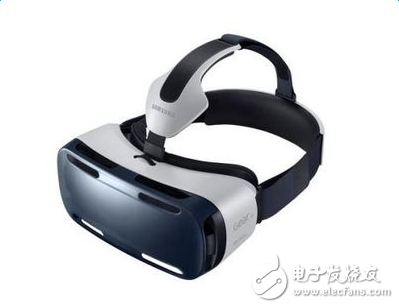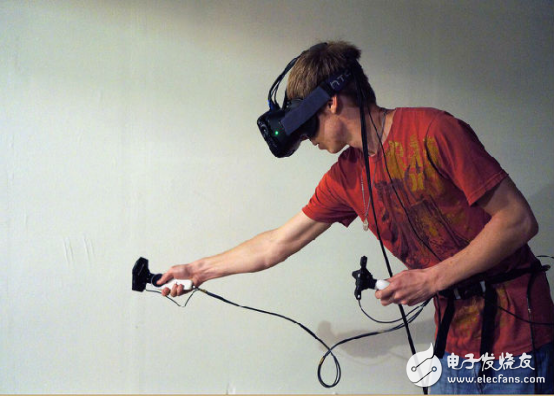Guide: Unlike the hot situation in 2015 and early 2016, the VR market was in a downturn in the second half of 2016, and the voices of domestic and foreign VR companies closing down, transforming, and layoffs came one after another. The downturn in VR is actually not surprising. After all, it takes time for an industry to mature. Looking at the development experience of the emerging industries in the past, it is not difficult to find that there will be some inflection point when the industry develops to a certain extent. This inflection point is also a reshuffle period. In other words, the next time VR enters the technical accumulation period.
As we all know, the big cake in the VR (virtual reality) market is divided into two major sections: hardware manufacturing and content development. At present, the VR industry encounters some bottlenecks in hardware manufacturing and content development.
In the process of the outbreak of popularization, the VR industry needs a price threshold like the popularity of mobile phones. Moreover, VR content also needs a benign business model to attract users to use the content, which requires sufficient users and equipment, the equipment needs to be convenient and easy to use, and the price is cheap enough.

At present, the limitations of VR hardware and software technology, the inconvenient use of equipment, and poor performance are still outstanding. The price of VR equipment is also very high. The cost of a helmet-mounted display plus a host computer is tens of thousands. Therefore, Microsoft plans to team up with a number of computer manufacturers. In 2017, the introduction of a cheap version of VR headsets for around $300 will help VR become more popular.
Giants including Intel and Qualcomm are looking for breakthroughs in VR technology to improve user VR experience. Consumers are also eager for quality content and viable VR business models in addition to hardware experience.
Leading companies HTC, Sony and Oculus are building virtual reality application ecosystems around their platforms, encouraging third parties to develop high-quality virtual reality games, videos, and applications such as distance education, remote shopping, training, and medical care.
Oculus chief scientist Michael Abrash gave us a five-year VR map: it has higher resolution, wider FOV, support for variable scene depth, support for eye movement tracking, better ergonomics, and augmented reality technology. More importantly, its price will make it affordable for ordinary people.

Although the VR market is in a downturn in the second half of 2016, we should not lose confidence in the VR industry. The new annual trend report released by Ericsson Consumer Labs – VR is still one of the top 10 trend trends in 2017 and beyond.
This year is also the largest virtual reality (VR) technology exhibition in CES history, with more than 70 companies participating in the exhibition, a jump of 48% over 2016. HTC Vive launched wireless VR, Intel redefines virtual reality, VR becomes a highlight of CES2017, and VR is on the topic list because of the "black technology" of various technology giants on CES.
The enthusiasm for consumption in the VR industry last year was good. Market research and analysis agencies recently released a report on the 2016 virtual reality market. According to the report, the global virtual reality market has a total output value of US$1.8 billion in 2016, while the total sales of VR head-mounted devices reached 6.3 million units. Samsung Gear VR sales are estimated at 4.5 million units, ranking first. Sony's PlayStaTIon VR ranks second with sales of “nearly 1 million unitsâ€, and the combined sales of Oculus, Google and HTC's virtual reality heads are about 1 million units.
IDC China data shows that in the third quarter of 2016, China's VR market shipments were 204,000 units, an increase of 367.9% from the previous quarter. From the third quarter of 2015 to the first quarter of 2016, the growth of the VR market was weak, mainly because the international VR brand announced that it would enter the Chinese market, and the consumer side held the currency. However, from the second quarter of 2016, the VR market grew significantly faster than the quarter. In the third quarter, the VR market continued to maintain rapid growth. In the fourth quarter of 2016, with the global shipment of Sony PSVR, the VR market was further boosted.

Moreover, the VR industry is still favored by capital. In the face of the VR market with huge development potential, the capital forces of all walks of life will certainly not miss this opportunity that may earn a lot of money. Although the development of the VR industry has not met expectations, capital investment in VR is becoming more cautious, but entrepreneurs can still find their own business models through the combination of technology and services, and then gain capital attention.
Since the beginning of 2017, the number of VR/AR investments and acquisitions has shown a significant growth trend, among which the largest companies are the most active. This seems to be paving the way for them to “make big things†this year. Their investment/acquisition targets are in the areas of technology, content and corporate services.
The biggest financing is the cloud conference service provider Zoom, which received a $100 million D-round financing led by Sequoia Capital. The company enables easy collaboration between companies by addressing the huge market demand for cloud computing video conferencing.
The significance of this investment is that Zoom officially announced its entry into the VR/AR industry, and they will develop revolutionary products and features. Sequoia Capital is looking at Zoom because they believe that every room will be connected through Zoom in ten years.
We have seen VR social entertainment elements from some social software such as AltspaceVR, and a unique feature is to communicate seamlessly with people in different regions.
Valve's acquisition of VR audio company Impulsonic (the creation of physics-based spatial audio positioning software for game developers) means that the world's three best companies with 3D audio technology have been acquired by big companies (Two Big Ears was acquired by Facebook) , Thrive Audio was acquired by Google).
It can be seen that 3D sound plays a key role in immersion.
The Valve acquisition may be for the built-in 3D audio of the HTC Vive, as the Oculus Rift already has this feature built in. Of course, Valve may also leave a new VR helmet.
Microsoft's acquisition of 3D data optimization company Simplygon is also in line with the strategy he released last year. 3D authoring is Microsoft's next focus, and Simplygon's technology can help developers complete their creations more efficiently and simply. Of course, it also has an impact on the HoloLens and VR projects.
In 2017, VR manufacturers will continue to improve in hardware manufacturing and content development. The cooperation between hardware and software will further improve and improve the user experience.
Looking forward to the future VR industry direction, first, mobile VR will not only become the choice of simple VR experience, but also become the VR experience choice for most people; second, VR experience will be a combination of PC and mobile VR experience. . It offers the convenience and low price of mobile VR, while also enabling PC VR immersive experience and large-scale room tracking. This ideal VR device is still in the exploratory stage for the current VR giants.
Summary: The VR industry is still in its early stages, and the future VR technology will get better and better. It may become a new entry point for us to see the world. It may change the business model of the retail industry and may change the future population flow and human settlement structure. Everything is possible. .
More stable performance
Disposable ecig have a completely enclosed design, reducing the need for charging and replacing cartridges. The no-charge design also reduces the occurrence of faults. It is understood that with rechargeable e-cigarettes, each cartridge needs to be charged at least once and the battery efficiency is extremely low, while the design of disposable ecig can solve this problem very well.Disposable ecig are very easy to carry on daily trips, no need for any operation in the use of airflow induction, direct suction can be out of smoke, meaning that you just need to suck directly on the hand can be the main feature of the small cigarette is practical portability is the main, its appearance is very small, no longer like the previous big smoke box mechanical rod nowhere to put.
The market outlook for disposable ecig
There has been a controversial topic regarding the use of disposable ecig. According to scientific studies, the long-term use of e-cigarettes can cause harm to the human body, no less than tobacco. Therefore, it is important not to overuse either type of e-cigarette - after all, smoking is bad for your health. Specifically, the PMTA requires that any new tobacco product be approved by the FDA for legal promotion and that the FDA consider all aspects of the product to be beneficial to public health. Our products can always be sold under the supervision of the PMTA at cost and are prohibited for sale to minors. We have strict guarantees regarding the quality of our products.
Disposable E-Cig,Disposable Vape Pen Oem,Best Disposable Vapes,One-Time Use Vape
Shenzhen MASON VAP Technology Co., Ltd. , https://www.masonvap.com
